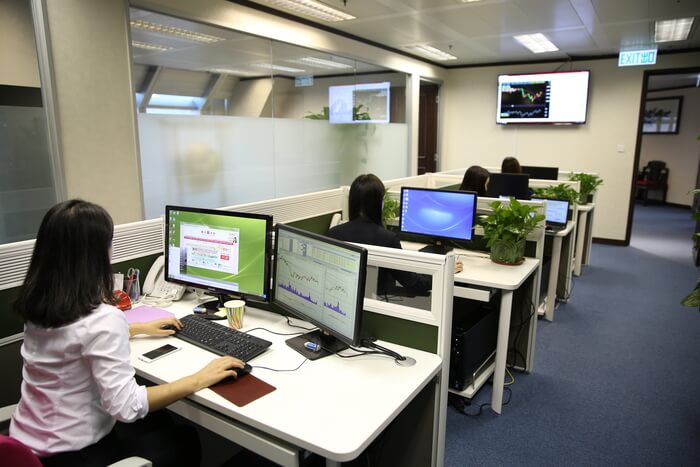
Behind all the shiny publicity that encourages consumers to buy your products, it is the technical documentation that helps them get the best experience from their purchase and successfully use it.
When you show your product to the world, you reach out to technical translations, from user manuals to safety advice and warnings; translation of technical documentation ensures your customers around the world stay happy with your products long after the purchase. The challenge here is in handling multilingual documentation. That part can be especially tricky if you are working on a lot of different products.
What Is Translation Management?
Project management in translation projects is the automation of the translation process, where repetitive and laborious manual tasks are eliminated while control is enabled, collaboration increased.
Translation management determines requirements, arranges a plan for a project, ensures and administers human resources to efficiently complete the project.
The level of difficulty varies depending on the project. ClickHelp also has Translation Management features. You can leave comments and feedback on the translations, mark translations as ready for review, and be able to see the progress of each translation project. It includes such awesome collaboration functions so that everyone can work together on the same platform throughout the lengthy localization process.
Managing Technical Translation Tips
Here’s what should be considered for managing technical translation projects that will help you achieve flawless technical translation and manage long-term projects without the headaches:
Translators With Technical Knowledge
Thoroughly choose the linguistic team. For accurate technical translation, your translators need to be knowledgeable about your topics, products, and the technical intricacies of your documents. The chosen team must pass translation tests to prove their capability to translate the technical jargon.
Terminology Translation
Prepare your glossary for the project. The glossary should consist of the main terms used across the document. Get it translated and approved before starting the actual content translation that facilitates the review process and ensures the keywords are agreed in advance.
Comprehensive Materials for Translators
Supply reference files for your translation team. The team must check the context during translation. So it would be great to give them access to your application or software, share tutorials, or in some cases, provide them with training on the products.
Plain Language
Keep the text for translation short and succinct. The source text should be clear, concise, and to the point. Some languages expand in translation, and some fields in an application or manual might have character length restrictions.
Editable Visuals
Make your visuals editable. If your document includes graphs, diagrams, or other visuals, including text, make sure these are editable so they can be translated, too.
Documents Localization
Make the localization material. You should make sure the content for translation is correctly and completely extracted from the source files. Or you may end up discovering missing translations right before the product release and end up with an unwilling delay.
Using a Translation Memory Tool
Use translation memory (TM). A translation memory ensures that the terminology is used consistently across all materials and any previous review edits are followed.
Using a Translation Management System (TMS)
Use a translation management system. It allows you to automate your translation tasks, keep track of your translators’ progress, seamlessly manage project workflow between numerous translators, assign translation jobs to the right translators—without requiring human interaction.
Linguistic and Functional Quality Assurance (QA)
After the translation is completed and received, you should conduct both linguistic and functional review and quality assurance (QA). The linguistic QA ensures the accuracy of the translation in its final context. For software projects, it ensures that the text fits the required length and there are no cutdowns. With a functional review, you check things like hyperlinks to make sure they are leading to the correct path, etc.

What Is a Translation Management System?
Translation Management System (TMS) is a way of managing your translation and localization projects effectively from one place. You can forget about spreadsheets, email threads, and instructions. A TMS closely monitors project management as well, allowing the translation team to access detailed reporting to ensure projects are within budget and on time.
Benefits of a Translation Management System
Translation management technology has undeniable advantages, it:
- Automates processes. The right translation management software considerably reduces the level of human error in the coordination stages and speeds up the process by removing repetitive manual tasks with the help of an API for automation. It allows you to import locale files, download locale files, tag, create, or update keys, and interact in other ways with the localization data stored in your translation management software. Translation output is increased and time-to-market reduced.
- Centralizes linguistic assets. TMS has an in-built translation memory that allows you to keep all translated content stored. The software saves all changes made to translations, so it’s easy to look up older versions and even restore them if needed. Centralized translation memory (TM), terminology, and dictionaries ensure consistency and accuracy across the enterprise.
- Enables collaboration. Localization, translation, and project coordination all require the right collaboration. TMS may offer you ways to improve collaboration between team members and effectively manage your projects, working together as a team. Such software allows you to invite as many users as required to work with on your projects. Different kinds of users can communicate harmoniously across one solid platform, which improves cooperation and the efficiency of the translation process.
- Provides progress tracking. TMS is a system that allows you to keep communication organized and tasks correctly assigned. It provides estimation and tracking, so you know your translation costs before asking for quotes from translation vendors. It also provides business intelligence through out-of-the-box and custom reporting on translation performance metrics for continuous process improvement.
- Offers search function. It is time-consuming to find translations promptly in a project with thousands of entries. A flexible search engine of TMS lets you find what you’re looking for quickly and easily, without wasting time or causing unnecessary frustration.
- Allows for third-party interaction. TMS provides the opportunity for third parties to interact with the project and request new localization tasks and projects directly from you without having to leave the system. Rolling out new orders and new languages is achievable within hours, especially when the final translations are easily integrated into your translation management software.
In fairness, it must be said that not all translation management systems incorporate all the above-mentioned features. But, ideally, your TMS should be the only platform you need to use to manage all your internal participants and your external clients as well.

Conclusion
Technical translations make up a significant part of the language services industry since most translation work involves technical documentation. Companies in all sectors need professional translators when introducing new products to the market. Technical translators need to know the specific requirements of each industry. It’s the only way they can produce the documentation necessary to have a product accepted and adopted in international markets. In order to produce a good technical translation in multiple languages, translation management systems are used. Those systems can help you achieve flawless technical translation every time and manage long-term projects without headaches.
Good luck with your technical writing!
ClickHelp Team
Author, host and deliver documentation across platforms and devices